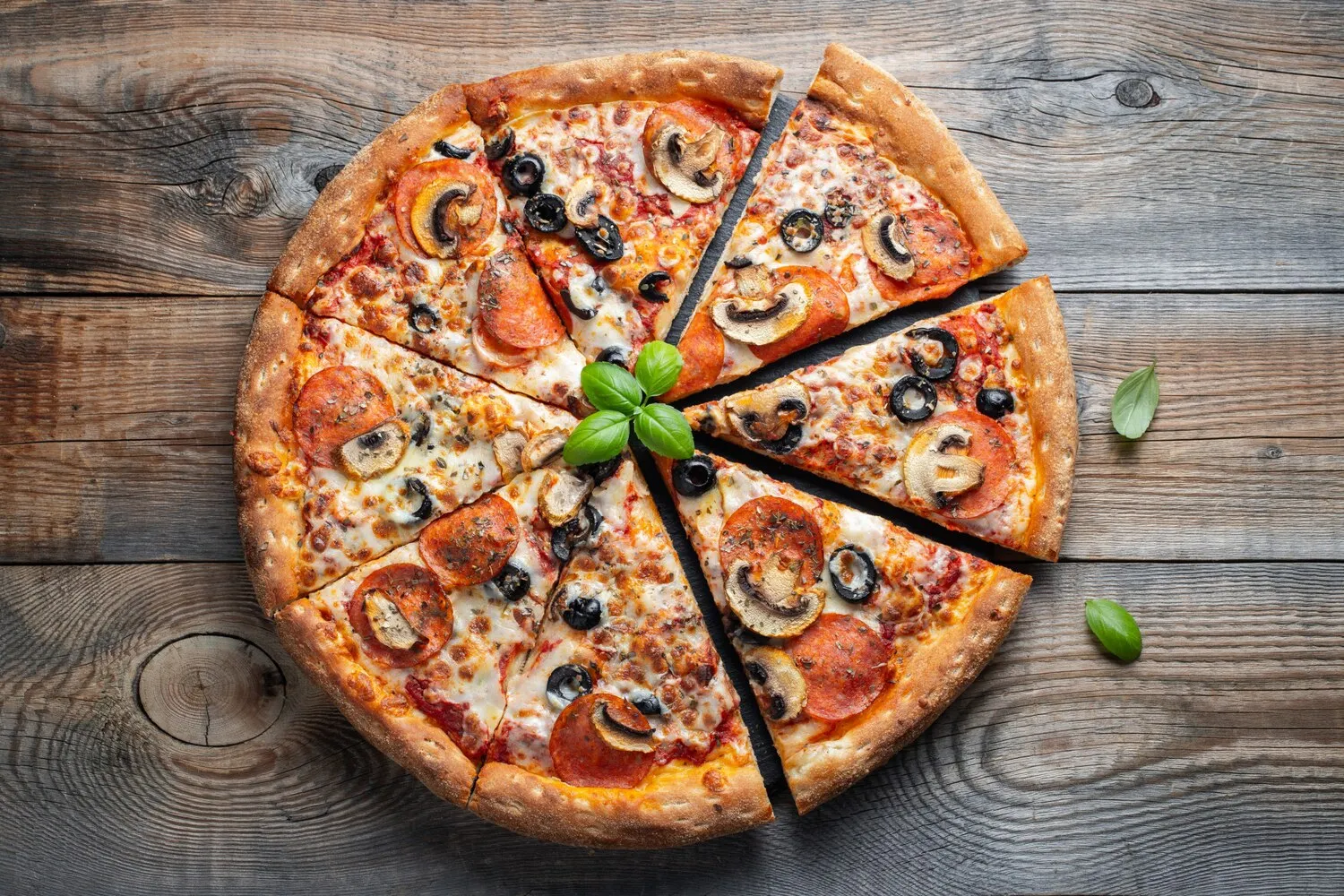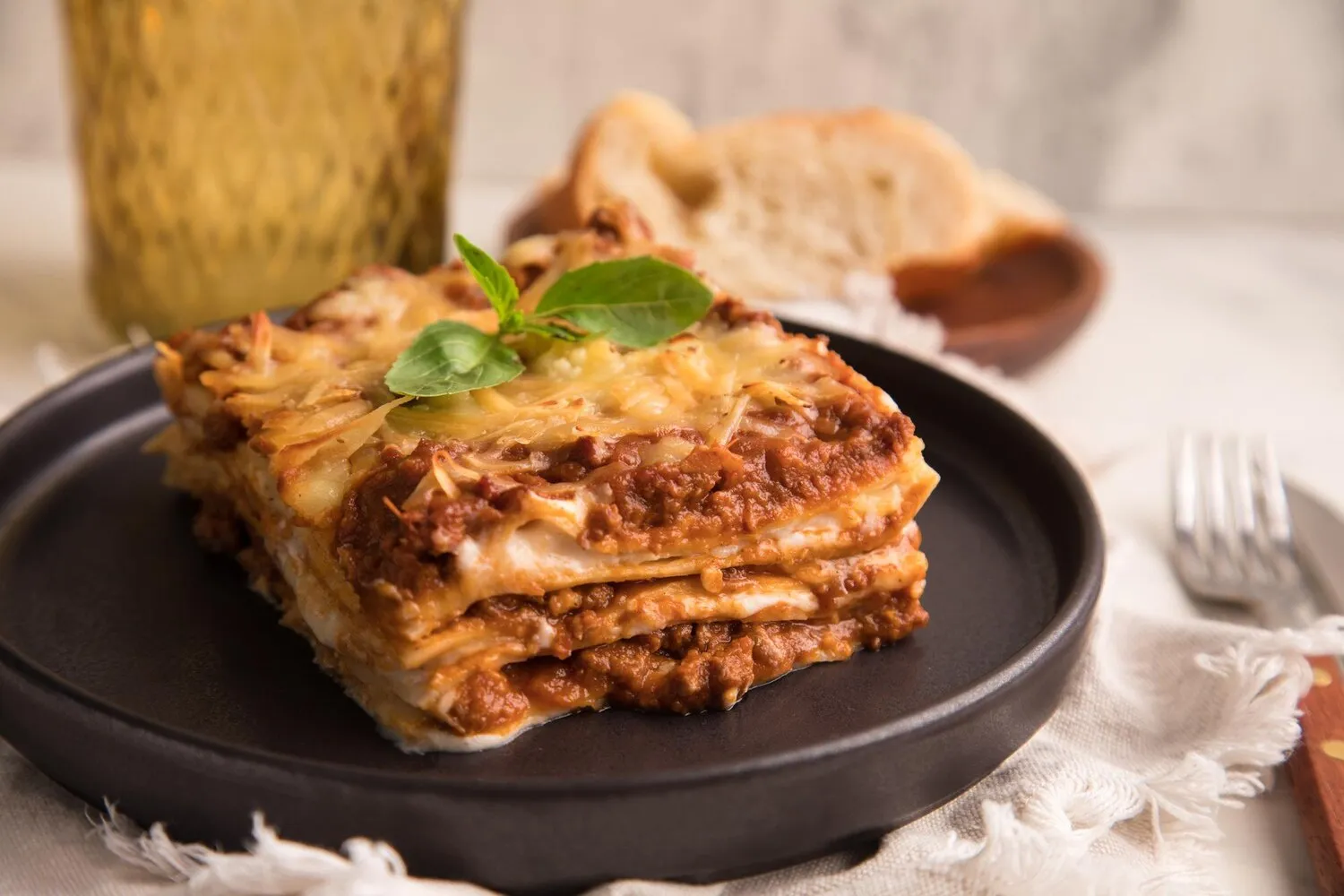
Pizza
Variety of pizza flavors are available. Popular choices seem to include classic Italian combinations.
Nutrition Facts
* The % Daily Value (DV) tells you how much a nutrient in a serving of food contributes to a daily diet. 2,000 calories a day is used for general nutrition advice.
Pizza's origins can be traced back to ancient civilizations that used flatbreads as a base for various toppings. However, the modern pizza as we know it evolved in Naples, Italy, during the 18th or early 19th century. It was a staple food for the poor, sold on the streets and featuring simple, readily available ingredients.
Pizza is more than just a dish; it's a cultural icon, deeply ingrained in Italian society and enjoyed worldwide. It represents sharing, comfort, and celebration, often associated with family gatherings and casual meals.
Social Gathering Food
Pizza is frequently shared among friends and family, making it a popular choice for parties and casual get-togethers. Its easily divisible nature and customizable toppings make it ideal for groups with diverse preferences.
Regional Variations
Different regions of Italy have their own unique styles of pizza, reflecting local ingredients and traditions. For example, Roman-style pizza is often thin and crispy, while Sicilian pizza is typically thick and rectangular.
Global Phenomenon
Pizza has become one of the most popular foods in the world, adapted and modified to suit local tastes and ingredients. From deep-dish pizza in Chicago to Hawaiian pizza (with pineapple), pizza's global appeal is undeniable.
Pizza offers a wide spectrum of flavors, primarily driven by the interplay between the crust, sauce, cheese, and toppings. The balance between acidity, sweetness, saltiness, and richness is key to a satisfying pizza experience.
The flavor profile of pizza is highly customizable. Classic Neapolitan pizza features a simple yet vibrant combination of San Marzano tomatoes (offering sweetness and acidity), fresh mozzarella cheese (providing creaminess and mild flavor), basil (adding herbaceous notes), and olive oil (contributing richness and aroma). Other popular flavors include pepperoni (spicy and salty), mushrooms (earthy and umami), sausage (savory and rich), onions (sweet and pungent), and peppers (sweet or spicy, depending on the variety). The crust itself can range from thin and crispy to thick and chewy, each contributing a different texture and flavor base. Certain varieties, like white pizza, forgo the tomato sauce altogether, emphasizing the flavors of cheese, garlic, and herbs.
Proper Dough Handling
Allow pizza dough to proof properly for optimal flavor and texture. Over-kneading can result in a tough crust, while under-kneading can lead to a flat, dense pizza.
Oven Temperature
A hot oven (ideally above 450°F/230°C) is crucial for achieving a crispy crust and melted cheese. A pizza stone or baking steel can help distribute heat evenly.
Ingredient Quality
Using high-quality ingredients, such as San Marzano tomatoes, fresh mozzarella, and extra virgin olive oil, can significantly enhance the flavor of your pizza.
Don't Overload Toppings
While it's tempting to pile on the toppings, too many can weigh down the crust and prevent it from cooking properly. Less is often more when it comes to pizza toppings.
Explore additional Italian dishes and restaurants
Explore ItalianDiscover top dining spots and culinary experiences in Campina Grande.
Explore Campina GrandeLearn more about the food culture, restaurant scene, and culinary heritage of Brazil.
Explore Brazil
